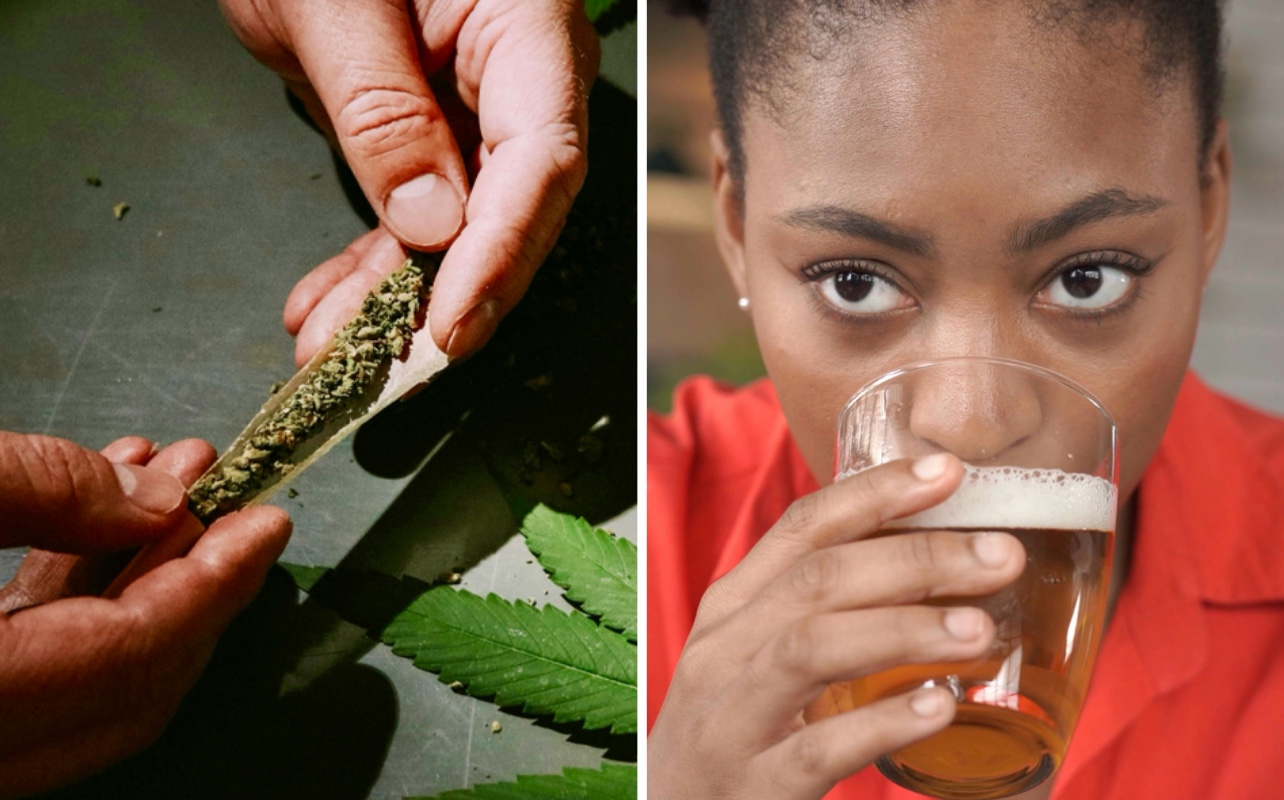
May 28, 2024
New Study Finds Marijuana Tops Alcohol With Daily Usage In The U.S.
Looks like marijuana is taking over....
Data from a new study reveals daily marijuana usage is more popular than drinking alcohol in the United States.
According to data from the National Survey on Drug Use and Health released on May 21, an intensive level of cannabis intake surpassed alcohol usage for the first time in 2022. Jonathan Caulkins, a cannabis policy researcher at Carnegie Mellon University and the study’s author, says alcohol is still in the running but not at the level it once was. “A good 40% of current cannabis users are using it daily or near daily, a pattern that is more associated with tobacco use than typical alcohol use,” Caulkins said.
There were approximately 17.7 million people who used marijuana daily or almost daily in 2022, in comparison to over 14 million drinkers. Between 1992 to 2022, the rate of every day, or close to, marijuana use increased 15-fold.
Policy changes in states can be looked at as a driving force. As recreational marijuana is legal in 24 states, according to CBS News, the U.S. Drug Enforcement Administration is reclassifying the drug to a less dangerous category. On the upcoming ballots in November 2024, Florida voters will decide on a constitutional amendment to allow recreational cannabis to be legal. But some experts feel the new data shows how addictive the drug can become.
Dr. David A. Gorelick, a psychiatry professor at the University of Maryland School of Medicine, says the growing number of daily users suggests a rise in people being at risk of developing problematic cannabis use. “High-frequency use also increases the risk of developing cannabis-associated psychosis,” a severe condition where a person loses touch with reality,” the professor said.
Addiction psychiatrist Colin Reiff attributes schizophrenia to excessive cannabis use in some young people, particularly young men, as their brains are still maturing at a young age. “The legalized age for cannabis should be around 33 years old, when people are outside the window of developing schizophrenia and bipolar disorder and a lot of other things,” Reiff said.
“Or most certainly it should be after 26, once the prefrontal cortex is done developing.”
Numbers from the University of Mississippi’s potency monitoring project show the average level of the main component of weed that triggers psychoactive effects, THC, increased from 4% in 1995 to over 15% in 2021.
However, that doesn’t seem to bother a certain demographic — people aged 18 to 24, with 69% preferring marijuana to alcohol. “I transitioned over into cannabis cause I saw that there’s limitless possibilities with the flavors,” said Matthew Everett, a smoker and Work ‘N’ Roll patron. “And I found like, hey, I don’t have a hangover the next day, too.”
Work ‘N’ Roll is an NYC-based cannabis-friendly coworking space where members, for as little as $15 a day, can smoke and work freely at the same time. Alcohol is banned on the premises, but bringing your own cannabis or having it delivered is allowed. Other members, Golda Moldavsky and Ellis Sudak, also in their twenties, say they don’t miss alcohol at all.
“I don’t miss it,” Sudak said.